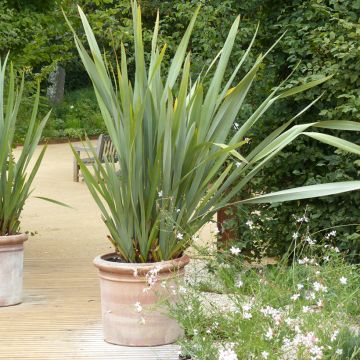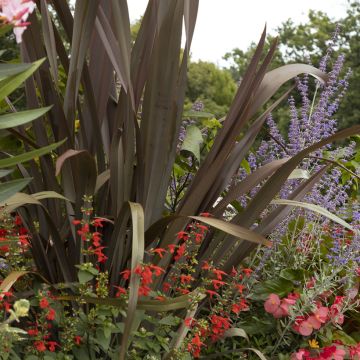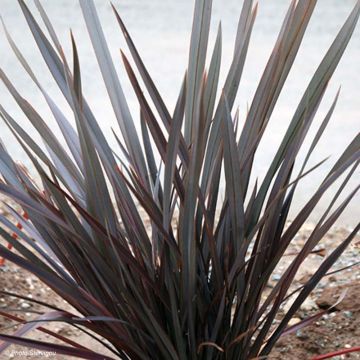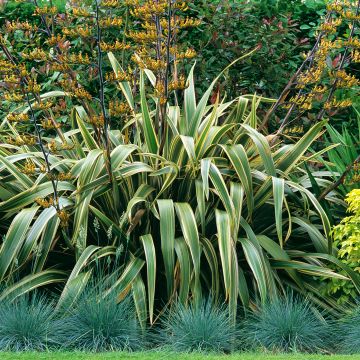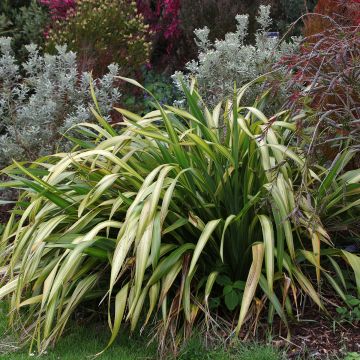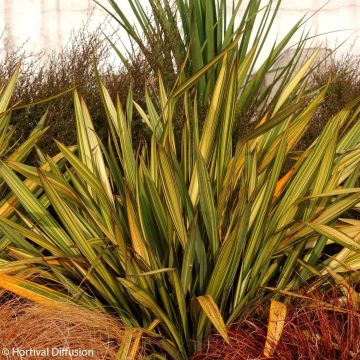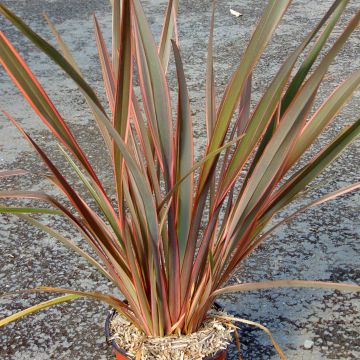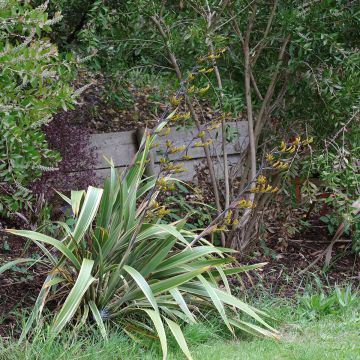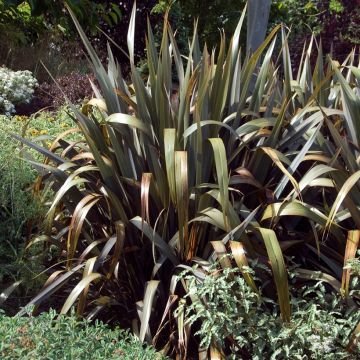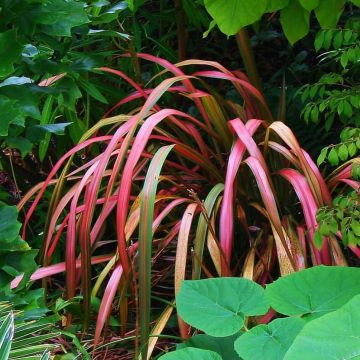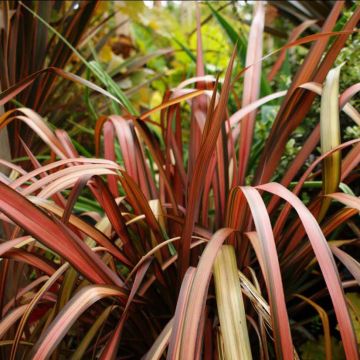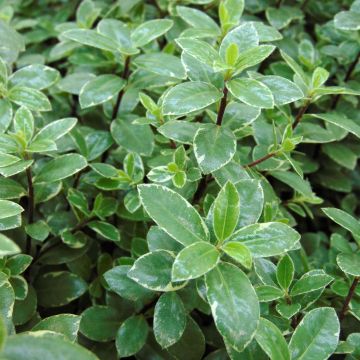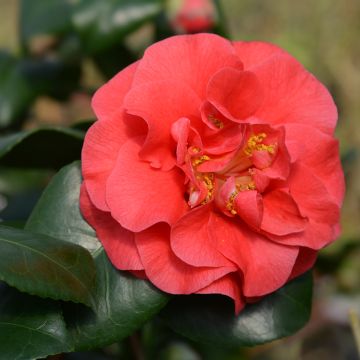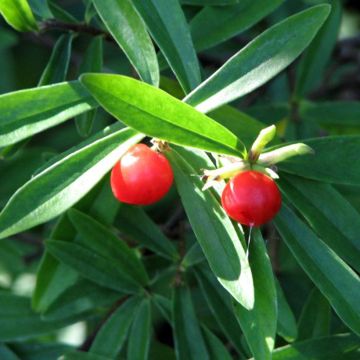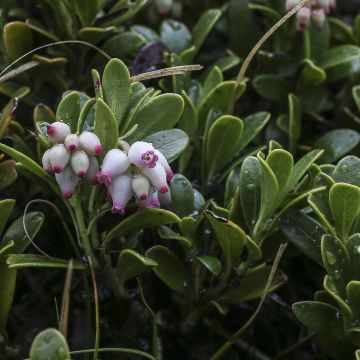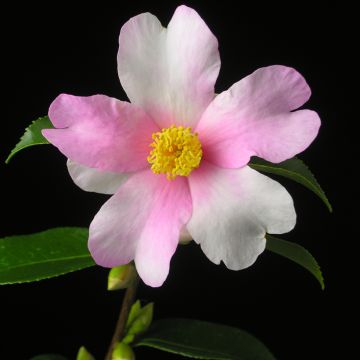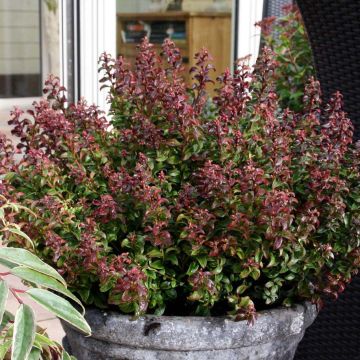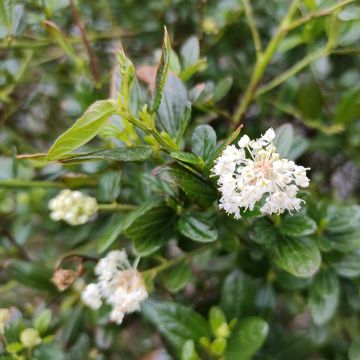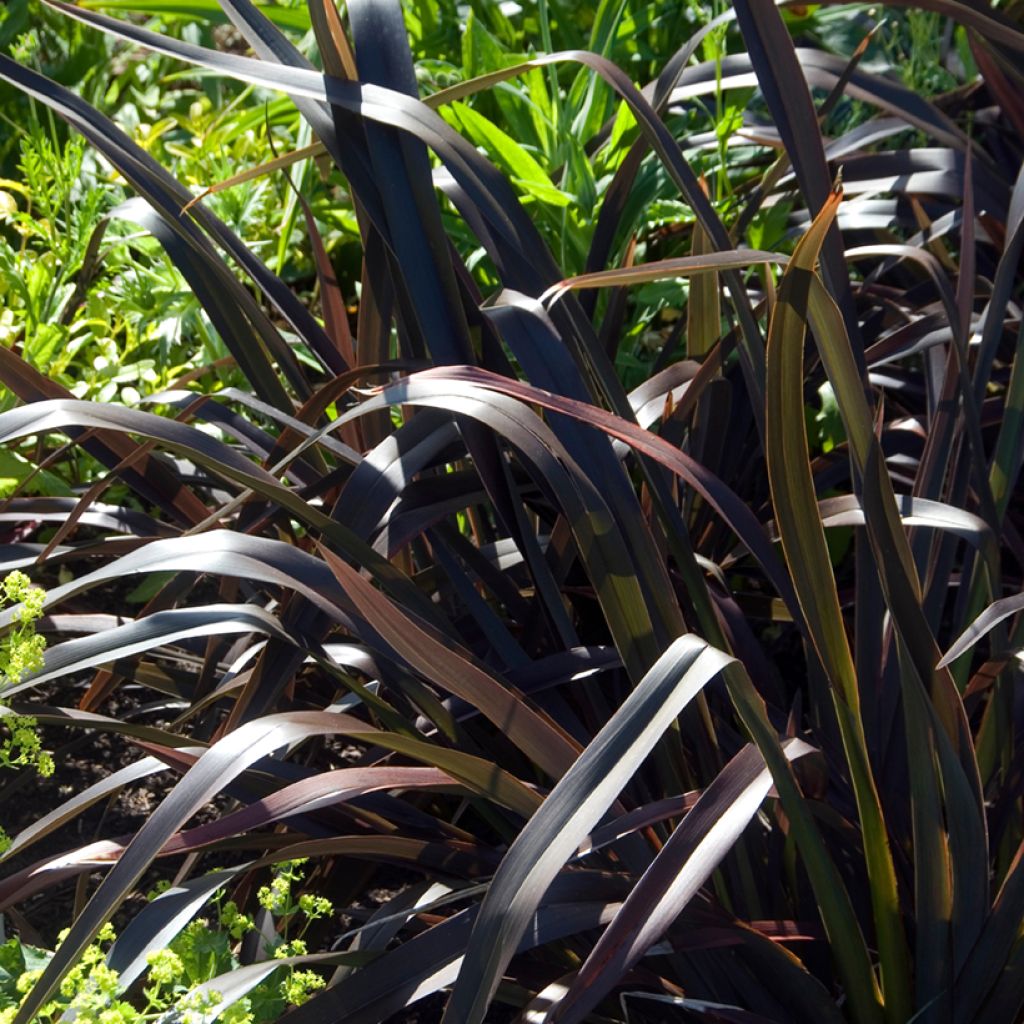

Phormium Platts Black
Phormium Platts Black
Phormium cookianum x tenax Platts Black
New Zealand Flax, Flax Lily
Why not try an alternative variety in stock?
View all →This plant carries a 12 months recovery warranty
More information
We guarantee the quality of our plants for a full growing cycle, and will replace at our expense any plant that fails to recover under normal climatic and planting conditions.
From €5.90 for pickup delivery and €6.90 for home delivery
Express home delivery from €8.90.
Does this plant fit my garden?
Set up your Plantfit profile →
Description
Phormium 'Platts Black', also known as the New Zealand Flax, forms a fairly large dense and upright clump with remarkable foliage, ranging in colour from dark chocolate to black depending on the light. The relatively wide leaves are shiny on the top and satin on the underside, creating metallic reflections and a very sculptural visual effect. This characterful perennial is hardy down to -7°C in deep, fertile soil in a mild coastal garden, or place it in a large pot to bring indoors during winter.
The 'Platts Black' New Zealand Flax, like all Phormiums, belongs to the agavaceae family. It is a variety mainly derived from Phormium tenax, the larger of the two New Zealand species. This superb rhizomatous perennial slowly develops into a non-running, wide clump. With a very upright habit, it reaches an average height of 1.20m depending on growing conditions, with a spread of 1m or more in fertile and moist soil. The evergreen leaves are about 3 to 4cm wide, stiff and pointed at their tips. Tall flower stems of at least 1.30m appear from May to July, depending on the climate, towering above the foliage clump. They are tinted with purple-red and bear curved tube-shaped flower spikes, which turn a more or less bright red when ripe. This flowering attracts certain birds and many pollinating insects.
Phormium is a highly decorative plant, ideal for large spaces in borders or rockeries, in regions with mild climates. Whether you choose to plant it alone or in groups, it structures the space while bringing an exotic charm to the garden. To enhance this plant, associate it with silver ground covers such as Artemisia, dwarf Nepeta mussini, or carpets of blue fescues. Like tall grasses, the Phormium fits perfectly into a modern garden with clean lines. In colder regions, it can be grown in a large pot on a terrace or balcony, and then protected from frost in winter in a cold greenhouse or a minimally heated conservatory. In urban environments, it softens the look of concrete structures and creates an exotic and contrasting atmosphere when combined with rounder plants such as Pittosporum or Helichrysums.
The Maoris use Phormiums as we use flax, for their fibres in the textile industry. This is likely the origin of the common name "New Zealand Flax".
Report an error about the product description
Flowering
Foliage
Plant habit
Botanical data
Phormium
cookianum x tenax
Platts Black
Asphodelaceae
New Zealand Flax, Flax Lily
Phormium cookianum 'Platt's Black', Phormium tenax 'Platt's Black'
Cultivar or hybrid
Other Phormium
Planting and care
Phormium Platts Black is a hardy plant that can only be grown in open ground in regions where frost does not drop below -7°. Everywhere else, pot cultivation is more suitable, which will allow wintering sheltered from frost, in a cool and bright room.
Plant your Phormium in a container or a large pot whose bottom has been filled with gravel, pottery shards or clay balls. The mixture should be fertile and well-draining (1/3 leaf compost, 1/3 compost and 1/3 ordinary garden soil, enriched with a handful of crushed horn).
Place the plant in full sun. Water abundantly during the growth period so that the soil never completely dries out. Feed the plant with "green plant" fertiliser diluted in water, once a month. In winter, reduce water and fertiliser inputs, and let the soil dry superficially between two waterings.
In regions with mild climates and light frost, you can plant Phormium in open ground, in full sun, in well-drained and fertile soil.
In summer, make sure the plant does not lack water. In winter, it can rely on rainwater.
In case of severe frost, place a thick mulch at the base of the plant, and cover it with a winter fleece.
In the coldest regions, a thick mulch will help protect the roots from freezing in winter.
Planting period
Intended location
Care
This item has not been reviewed yet - be the first to leave a review about it.
Evergreen shrubs
Haven't found what you were looking for?
Hardiness is the lowest winter temperature a plant can endure without suffering serious damage or even dying. However, hardiness is affected by location (a sheltered area, such as a patio), protection (winter cover) and soil type (hardiness is improved by well-drained soil).

Photo Sharing Terms & Conditions
In order to encourage gardeners to interact and share their experiences, Promesse de fleurs offers various media enabling content to be uploaded onto its Site - in particular via the ‘Photo sharing’ module.
The User agrees to refrain from:
- Posting any content that is illegal, prejudicial, insulting, racist, inciteful to hatred, revisionist, contrary to public decency, that infringes on privacy or on the privacy rights of third parties, in particular the publicity rights of persons and goods, intellectual property rights, or the right to privacy.
- Submitting content on behalf of a third party;
- Impersonate the identity of a third party and/or publish any personal information about a third party;
In general, the User undertakes to refrain from any unethical behaviour.
All Content (in particular text, comments, files, images, photos, videos, creative works, etc.), which may be subject to property or intellectual property rights, image or other private rights, shall remain the property of the User, subject to the limited rights granted by the terms of the licence granted by Promesse de fleurs as stated below. Users are at liberty to publish or not to publish such Content on the Site, notably via the ‘Photo Sharing’ facility, and accept that this Content shall be made public and freely accessible, notably on the Internet.
Users further acknowledge, undertake to have ,and guarantee that they hold all necessary rights and permissions to publish such material on the Site, in particular with regard to the legislation in force pertaining to any privacy, property, intellectual property, image, or contractual rights, or rights of any other nature. By publishing such Content on the Site, Users acknowledge accepting full liability as publishers of the Content within the meaning of the law, and grant Promesse de fleurs, free of charge, an inclusive, worldwide licence for the said Content for the entire duration of its publication, including all reproduction, representation, up/downloading, displaying, performing, transmission, and storage rights.
Users also grant permission for their name to be linked to the Content and accept that this link may not always be made available.
By engaging in posting material, Users consent to their Content becoming automatically accessible on the Internet, in particular on other sites and/or blogs and/or web pages of the Promesse de fleurs site, including in particular social pages and the Promesse de fleurs catalogue.
Users may secure the removal of entrusted content free of charge by issuing a simple request via our contact form.
The flowering period indicated on our website applies to countries and regions located in USDA zone 8 (France, the United Kingdom, Ireland, the Netherlands, etc.)
It will vary according to where you live:
- In zones 9 to 10 (Italy, Spain, Greece, etc.), flowering will occur about 2 to 4 weeks earlier.
- In zones 6 to 7 (Germany, Poland, Slovenia, and lower mountainous regions), flowering will be delayed by 2 to 3 weeks.
- In zone 5 (Central Europe, Scandinavia), blooming will be delayed by 3 to 5 weeks.
In temperate climates, pruning of spring-flowering shrubs (forsythia, spireas, etc.) should be done just after flowering.
Pruning of summer-flowering shrubs (Indian Lilac, Perovskia, etc.) can be done in winter or spring.
In cold regions as well as with frost-sensitive plants, avoid pruning too early when severe frosts may still occur.
The planting period indicated on our website applies to countries and regions located in USDA zone 8 (France, United Kingdom, Ireland, Netherlands).
It will vary according to where you live:
- In Mediterranean zones (Marseille, Madrid, Milan, etc.), autumn and winter are the best planting periods.
- In continental zones (Strasbourg, Munich, Vienna, etc.), delay planting by 2 to 3 weeks in spring and bring it forward by 2 to 4 weeks in autumn.
- In mountainous regions (the Alps, Pyrenees, Carpathians, etc.), it is best to plant in late spring (May-June) or late summer (August-September).
The harvesting period indicated on our website applies to countries and regions in USDA zone 8 (France, England, Ireland, the Netherlands).
In colder areas (Scandinavia, Poland, Austria...) fruit and vegetable harvests are likely to be delayed by 3-4 weeks.
In warmer areas (Italy, Spain, Greece, etc.), harvesting will probably take place earlier, depending on weather conditions.
The sowing periods indicated on our website apply to countries and regions within USDA Zone 8 (France, UK, Ireland, Netherlands).
In colder areas (Scandinavia, Poland, Austria...), delay any outdoor sowing by 3-4 weeks, or sow under glass.
In warmer climes (Italy, Spain, Greece, etc.), bring outdoor sowing forward by a few weeks.

































